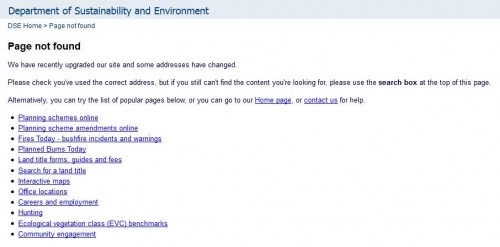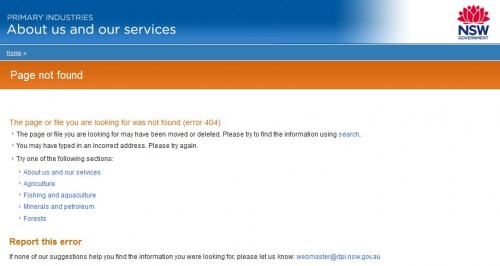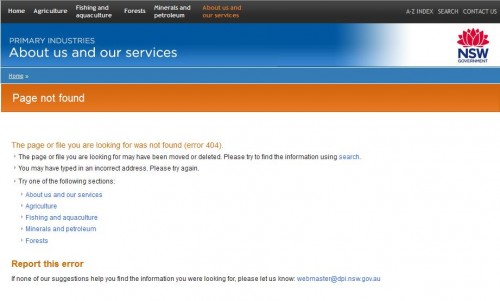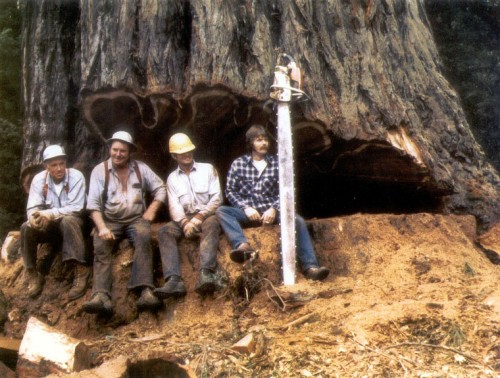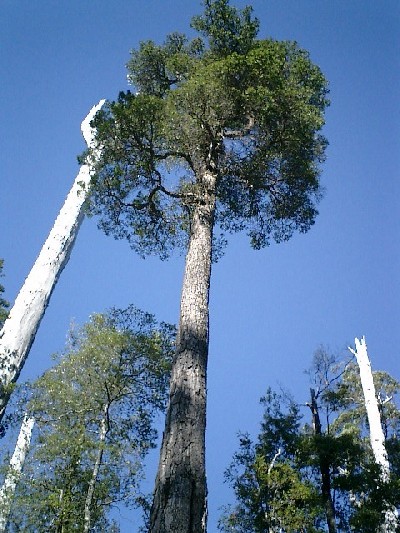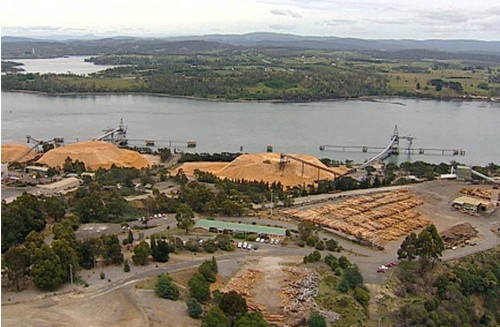‘World Forestry Day’ = World Logging Day
Sunday, August 7th, 2011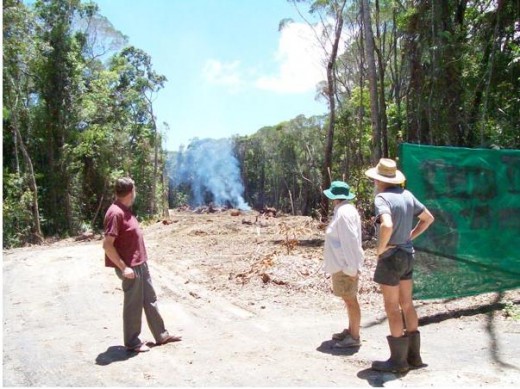 Logging a road through old-growth rainforest
Atherton Tablelands, Far North Queensland
© 2008 Friends of the Earth Kuranda
[Source http://foekuranda.org/]
Logging a road through old-growth rainforest
Atherton Tablelands, Far North Queensland
© 2008 Friends of the Earth Kuranda
[Source http://foekuranda.org/]
.
‘World Forestry Day’ on 21st March is a greenwash promotion by the logging industry. It has the same meaning as the oxymoronic ‘eco-logging‘ (see above photograph).
[‘Eco=logging‘ means that we do leave some trees, sometimes. Some dodgy entrepreneur in South America has tried to register the name ‘ecologging’ as a trademark [^Read More] ]
The concept sounds noble enough on the Victorian Government’s Department of Sustainability and Environment (DSE) site:
“World Forestry Day has been celebrated around the world for 30 years to remind communities of the importance of forests and the many benefits which we gain from them. The concept of having a World Forestry Day originated at the 23rd General Assembly of the European Confederation of Agriculture in 1971.”
.
But hang on a second!
…a “Confederation of Agriculture” …this suggests a different set of values than anecological respect for native forests; somewhat more to do with agriculture (aka ‘logging‘). But I let the Victorian Government’s Dept of Sustainability and Environment (DSE) site continue:
.
“Forests provide many valuable things for the whole community. These include fresh water from forested catchments, a safe home for our flora and fauna, timber for our homes, furniture and paper, beautiful scenery and rugged environments for those who enjoy the outdoors, pollen and nectar for honey production, and archaeological and historical sites.”
“Today, Victoria has an area of approximately 22.7 million hectares. About 40% is public land, meaning that it is owned by the State and managed by the government. There are about 4.8 million hectares of publicly owned native forest which is divided into the following categories: National parks and reserves – 1.7 million hectares, State forest – 3.1 million hectares.”
“Less than one third of Victoria’s state forests are available for timber harvesting and these forests produce more than two million cubic metres of wood products which return about $50 million in revenue to the State.”
.
Ah Ha! So it’s all about revenue FROM our native forests, not a about being FOR our native forests! That phrase ‘timber harvesting‘ conveys such wholesome overtones of good honest pastoral labour, except it’s bloody logging forests! The term has been borrowed by poachers slaughtering kangaroos who euphemistically label the wildlife crime as ‘kangaroo harvesting‘.
So why not just rename this green-washing ‘World Forestry Day‘ what it really is: a celebration of logging – and rename it ‘World Logging Day‘?
DSE on its site suggests:
‘What can I do on World Forestry Day?” ..well children (the propaganda targets school children):
“Celebrate World Forestry Day by visiting your local forests and learning more about the many contributions they make to our well-being. For further information and ideas, see our Forest Education Information.” This link then takes the children directly to the ‘For Schools;’ section of its website which sends a key mesage [sic] to students that ‘forests have many different uses and values.” A second link takes children direct to the hardcore logging site of the Department of Primary Industries”.
.
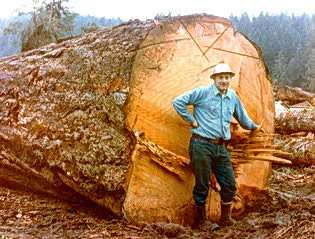 Proud logger
Proud logger
.
Forests should be celebrated in their natural state, not by their exploitative revenue potential. Pity that we are now celebrating these in islands and outside the mainstream media. The contrasting ‘Earth Hour’ hype of late seems so token, yet attracts such mainstream publicity and has even Peter Garrett as its cheerleader! But beyond people thinking about turning off lights, Earth Hour pales in addressing irreversible planet damage compared with any day that recognizes the value of global forests.
Recognising natural undisturbed forests and the ‘green carbon’ benefits they contribute to a healthy global future is more important than token politics. As advocated by Professor Brendan Mackey in an article in EEG’s The Potoroo Review (current Spring/Summer 2008-09 edition, p9), “estimates that around 9.3 billion tones of carbon can be stored in the 14.5 million hectares of eucalypt forest in southeast Australia IF THEY ARE LEFT UNDISTURBED.”
While one supports the celebration of native forests in their natural place, the drawback of World Forestry Day is that the forestry industry has corrupted the word ‘forestry’ into a vernacular meaning of ‘exploitation value’.
.
.
World Forest Day – online propaganda during 2010
.
In 2010, if one searched ‘World Forestry Day’ online, one got the following suspicious results:
.
Google Search #1: Department of Sustainability and Environment (DSE) (aka Victorian Government)…say no more
.
.
Google Search #2: NSW Department of Primary Industries | Forests (a chainsaw endorsed site)
http://www.forest.nsw.gov.au/publication/forest_facts/celebrating_ trees_forests/default.asp
.
.
Google Search #3: Global Education, but linked to ‘DSE’ after scrolling down the page
(another Victorian Government website)
.
.
Google Search #4: Better Health (Victorian Government again)
.
.
So when searching ‘World Forestry Day‘ online, clearly Australian state governments’ greenwashing has set up prime presence.
[Editor: The above government links have disappeared consistent with government short-termism].
.
.
NAFI Propaganda
.
Equally the National Association of Forestry Industries (NAFI) ^http://www.nafi.com.au offered a propaganda page on World Forest Day during 2011.
 NAFI’s logo
NAFI’s logo
.
NAFI boasts that it is..
‘the peak forest industry body in Australia representing a wide variety of companies involved in forest management, wood processing, commercial tree plantation growing, timber sales and distribution, carbon offset growers, forestry harvesters, haulage contractors, and engineered wood products manufacturers. NAFI also represents the interests of forestry research bodies, timber community groups and state forest industry bodies.’
.
Not surprisingly NAFI is located within a ten minute drive of Parliament House Canberra, with a politician never out of earshot.
.
NAFI’s VISION THING
.
‘The vision of NAFI is for an ecologicaly [sic] sustainable Australian society based, in part, on a dynamic, internationally competitive forest industry.’
Clearly drafted by an expensive consultant, it is utopian in its desire for harmonious co-existence between making a buck from logging forests, and conserving the ecological values of those same forests. In other words having one’s cake and eating it too. Pity they couldn’t spell ‘ecologically’.
Yet, conspicuously, ‘ecologically sustainable’ is missing in NAFI’s Objectives.
.
NAFI’s OBJECTIVES
.
- Improve the commercial results and investment attractiveness of the forest industries through favourable government policy decision and actions (i.e. make money from logging).
- Create a preferred position for the Australian forest industries in the rapidly changing international framework of treaties, codes of practice, standards, conventions and legislation. (i.e. influence law making so that more money can be made from logging).
- Achieve widespread community recognition of the social, environmental and economic benefits of forest industries. (i.e. drive a propaganda strategy to win hearts and minds that logging is good).
- Support and promote innovation, research and development. (i.e. pay universities to write reports to show that logging is good).
- Improve market opportunities and competitive advantage in order to increase demand for forest products and achieve consumer satisfaction (i.e. market logging).
- Achieve maximum utilisation of Australian resources within a framework of an open and competitive market. (i.e. be efficient by logging all the forest and invite others to join in).
- Service members needs and maximise industry ownership and involvement in the Association. (i.e. lobby loggers interests for more forests to log and build numbers to maximise political influence)
.
Without compromise, the above objectives convey a single minded focus on commercial logging of forests.
.
NAFI’s BIGGER LOGGER LOBBY GROUPING: ‘AFPA’
.
Consistent with the NAFI objectives (not the VISION), in April 2011 the Australian Forest Products Association (AFPA) was formed through the merger of the Australian Plantations Products and Paper Industry Council (A3P) and the National Association of Forest Industries (NAFI). Nothing uncertain about the motives of this organisation. Anyone who profits from logging is represented by AFPA – ‘tree plantation growers, harvest and haulage contractors, sawmillers, forest product exporters, and pulp and paper processors’. The new website is ^http://www.ausfpa.com.au/site/
Not surprisingly, AFPA is strategically located in NAFI’s offices, just a ten minute drive from Parliament House, Canberra, with ready access to the hearts and minds of Australia’s federal politicians.
A few weeks prior on 21 March 2011, a gala dinner was staged between the loggers and the politicians up the road at Parliament House, Canberra to (believe it or not) celebrate the United Nations’ Declaration of 2011 as the ‘International Year of Forests’. The logger body’s response to 2011 being the ‘International Year of Forests’ has been to unite loggers into a single united mighty lobbying force for logging – the AFPA.
“A single voice, a single association, is a clearer and more concise way to present the forest products industry to governments, the media and the people of Australia in a united fashion.”
– Linda Sewell, transitional Chairperson of AFPA and A3P Chairperson, after announcing the creation of AFPA in Canberra on 21 March 2011.
No surprise who is on the Transitional Board of AFPA – loggers and logging product merchants one and all:
- Ms Linda Sewell, HVP Plantations (Transitional Chairperson)
- Mr Bryan Tisher, Boral Timbers (Transitional Treasurer)
- Mr Greg McCormack, Midway Ptd Ltd
- Dr Hans Drielsma, Forestry Tasmania
- Mr Ian Telfer, WA Plantation Resources (WAPRES)
- Mr Jim Snelson, Carter Holt Harvey (CHH)
- Mr John McNamara, Hyne & Son
- Dr Jon Ryder, Australian Paper
- Mr Terry Edwards, Forest Industries Association of Tasmania (FIAT)
- Mr Vince Erasmus, Elders Forestry
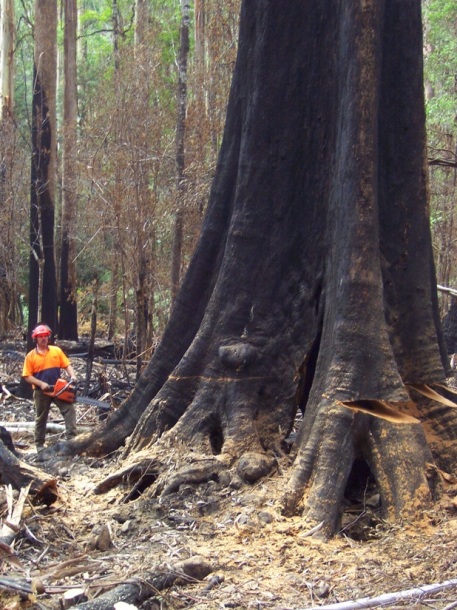 A more apt logo for the Logging Industry
A more apt logo for the Logging Industry
The motives for World Forestry Day are nothing but blatant pro-logging propaganda.
…’are you looking for the best chainsaw for cutting trees?’ ~ quote from Stihl’s website..
The term ‘Existence value’ deserves to be further explored and promulgated, so we can develop a greater non-utilitarian value of our natural and now rare forests. Our precious forest exists for their own sake, the forest ecosystems they support and of which we have so little comprehension of their global existence value and scarcity.
– end of article –
